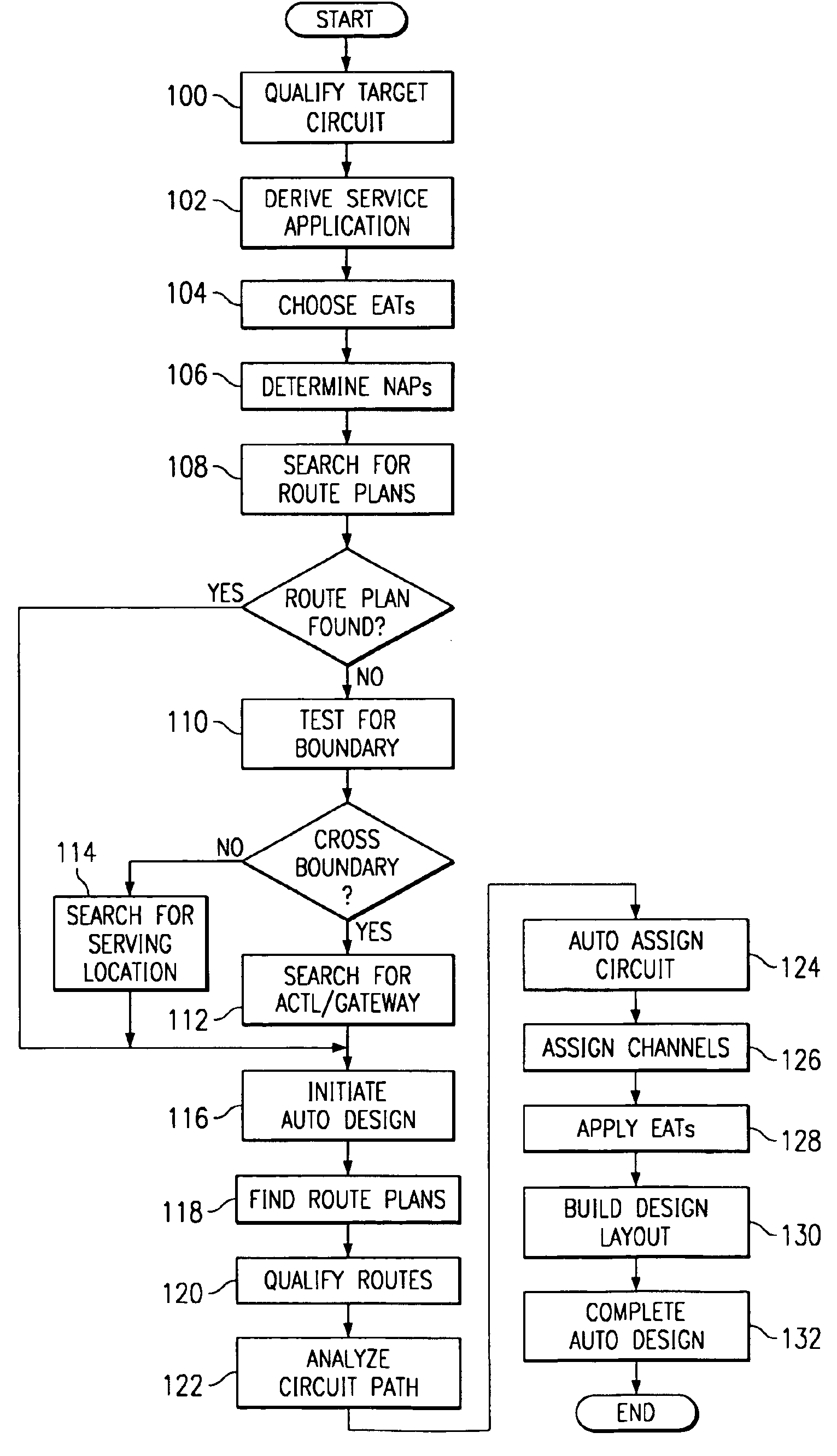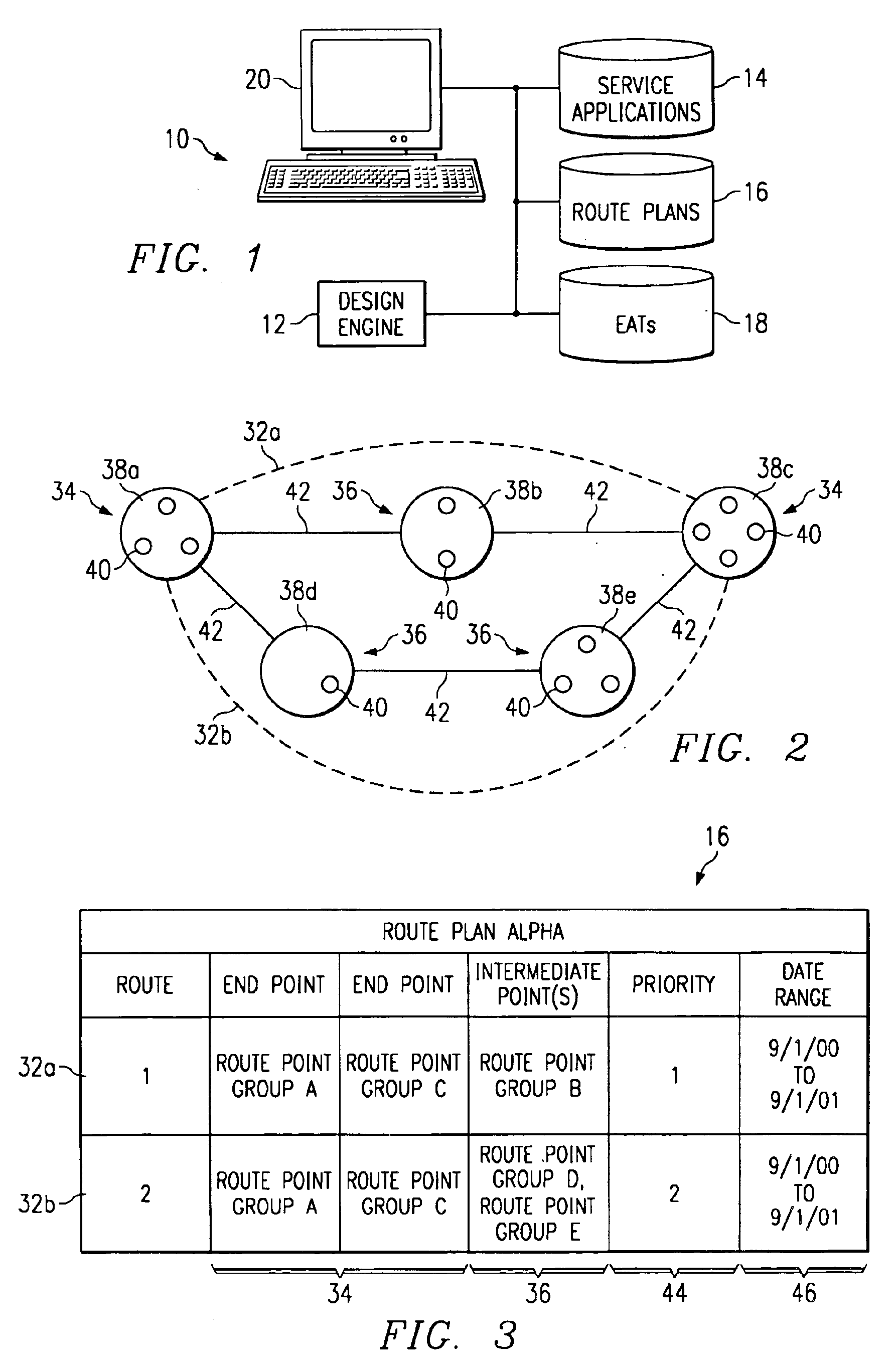System and method for automatically designing communications circuits
a communication circuit and automatic design technology, applied in the field of communication, can solve the problems of limiting the ability of network providers to transfer personnel, affecting the efficiency of network providers, and affecting the implementation efficiency of manual circuit design techniques, etc., and achieves the effect of substantially reducing the disadvantages and problems of previous techniques for designing communications circuits
- Summary
- Abstract
- Description
- Claims
- Application Information
AI Technical Summary
Benefits of technology
Problems solved by technology
Method used
Image
Examples
Embodiment Construction
[0021]Communications circuits connect network locations to enable communications between these locations, possibly through one or more intermediate locations. As an example, a circuit might be a circuit that connects two end users; a trunk circuit that connects two switching systems, a Signaling System No. 7 (SS7) link that connects a Signaling Transfer Point (STP) to a Service Switching Point (SSP), to another STP, or to a Service Control Point (SCP); a “911” or other emergency services circuit; a circuit including nodes on a Synchronous Optical Network (SONET) ring; a permanent virtual circuit (PVC), virtual connection, or link relying on Frame Relay (FR), Asynchronous Transfer Mode (ATM), Internet Protocol (IP), or any other packet-based protocol; a “bandwidth” circuit incorporating a physical circuit that virtual circuits “ride” using portions of its available bandwidth; or any other suitable circuit. The present invention encompasses the automatic design of any appropriate circ...
PUM
 Login to View More
Login to View More Abstract
Description
Claims
Application Information
 Login to View More
Login to View More - R&D
- Intellectual Property
- Life Sciences
- Materials
- Tech Scout
- Unparalleled Data Quality
- Higher Quality Content
- 60% Fewer Hallucinations
Browse by: Latest US Patents, China's latest patents, Technical Efficacy Thesaurus, Application Domain, Technology Topic, Popular Technical Reports.
© 2025 PatSnap. All rights reserved.Legal|Privacy policy|Modern Slavery Act Transparency Statement|Sitemap|About US| Contact US: help@patsnap.com



